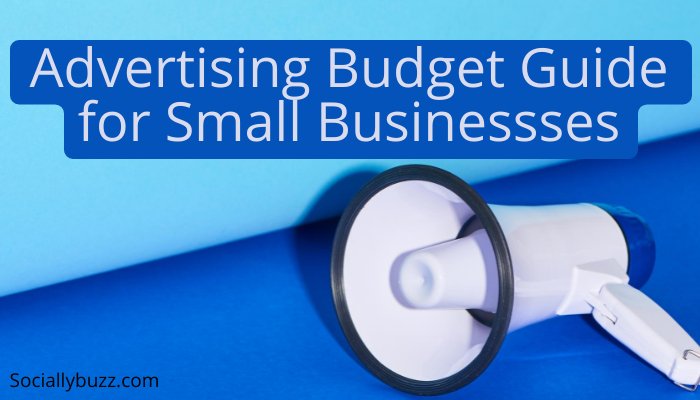
Every small business needs an adequate advertising budget to help them achieve its marketing objectives to effectively compete with similar businesses and accelerate sales across the different advertising media.
Many years ago, local newspapers, billboards, and radio ads were the normative advertising media for small businesses. They have begun exploring other advertising channels, including a website, search engine optimization (SEO), pay-per-click (PPC), content marketing, email marketing, AR/VR marketing, and social media marketing.
With the expansion of these advertising channels, digital platforms are now opening up new markets that call for advertising campaigns.
In terms of advertising figures for small businesses, there is no one size fits all rule. Even though there is common ground, there isn’t a single advertising budget for every small business because the size of small businesses varies. Other factors that determine the advertising budget of a small business include and are not limited to business revenue, stage of business, advertising channels, and methods.
In this article, you will learn what experts consider the average advertising budget for small businesses and how to create an advertising budget for your small business that will pay off.
While there isn’t a set percentage or monetary amount for what the advertising budget for a small business should be, there is a broad range.
According to the University of Maryland, the general range for an advertising budget is 10% of revenue. Due to the abovementioned factors, this broad percentage margin may not be suitable for every small business.
For instance, according to digital marketing agency WebStrategies, the business-to-consumer (B2C) product sector allocates 13.7% of advertising budgets, while the business-to-business sector only gives 6.7% of revenue to advertising. The percentage advertising budget for B2C businesses is higher because there are frequently more marketing channels and target customers that they want to employ advertising revenue to reach.
The CEO of Test Prep Insight, John Ross, has an alternative view. He suggested devoting 15% to 20% of revenues to advertising until you can build a name for yourself in your industry since there is more competition than ever.
The Rawrycat Mask™ inventor and founder of Rawrycat Pet Products, David Reichmann, advised small businesses to employ the 80/20 rule. 80% goes into prospecting ads, while 20% goes into retargeting ads.
According to him,
“Begin small, then scale up. Decide on a spending limit you can’t afford to exceed, then stick to it until you start to see results. You can start scaling up by as much as 20% every day as soon as you start seeing a good return on investment.”
Furthermore, the average percentage of the advertising budget for small businesses is primarily influenced by the owner’s age. While millennials spend the most on advertising, Baby boomers and Generation X business owners feel “obligated” to spend money on advertising.
Check out this article below
Read more: Advertising Ideas for Small Businesses
The following is a budget breakdown showing the costs you should consider when creating an advertising budget for your small business.
Let’s look at the average cost small businesses spend on each digital advertising channel.
The cost of developing a website affects small businesses ad budget. It can range from 3,000 to 100,000 thousand US dollars. A typical website will display your product and services and the work of convincing potential customers to choose your brand above your competitors.
The cost of web development for small businesses can be higher or lower, depending on the developer. Web developers in the USA, Canada, and Western Europe charge higher than developers in Eastern Europe and Asia and Africa.
Other factors that can influence cost include, number of pages you need for your website, building a website from scratch, required functionality, and selected content management system (CMS).

Another factor that influences advertising budget for small businesses is the cost of SEO. For small businesses, this can range between 600 to 5000 dollars per month. This cost comprises link development, content optimization, and keyword research to develop an SEO core. It depends on variables like the website’s size in terms of pages and copies, initial conditions and level of industry competition, and the number of target keywords.
SEO has to do with everything that raises the ranking of your website on Google and other search engines’ search results. This benefits your business because the higher you rank on search engines, the greater your visibility rate, traffic and revenue.
Pay-per-click advertising on Google, Facebook, Amazon, and any other web platform will cost about 1 to 50 thousand dollars monthly.
Pay-per-click is the quickest and most straightforward approach to scale web traffic, subscribers, views, and sales. Pay-per-click targets specific socio-demography, such as gender and potential customers in a particular location.

The cost of PPC advertising will depend on the following factors:
We conducted an A/B testing campaign to see which campaign-type performs the best between Google Local Campaign V.s Google Performance Max Campaign. The image below is the summary of our test.

Do you want us to help you generate more sales using PPC and Digital Advertising?
Content marketing costs up to $1,500 to $10,000 per month. The process includes:
Content marketing can generate organic traffic through an influx of potential customers. The content can include text, images, videos, infographics, graphics, animated gifs, memes, and more.
The cost of content marketing will be influenced by factors like the intricacy of the subject (business), the quantity of content required, the format, the level of knowledge needed, and the person who creates it.
Email marketing cost factors into advertising budget for small businesses; it can be free or may cost you about 3000 dollars. The price covers developing a marketing plan, designing templates, writing copy, creating landing pages, and testing fees for employing specialized software and services to automate email marketing.

An email marketing plan for small businesses will include an automated campaign that responds in real-time to user behaviors on your site and a monthly list of ads with information about sales and new products.
The cost of email marketing depends on factors, including the number of subscribers, how frequently you want to publish your newsletter, whether you want the procedure to be automated, the type and quality of your content, and if you wish to divide your subscribers into different groups.
Digital advertising that uses augmented reality (AR) and virtual reality (VR) costs from 500 to 100,000 dollars. AR/VR marketing utilizes cutting-edge technologies that enable customers to interact more closely with the product without leaving their desks or couch.
Trends suggest that only 10% of small businesses integrate AR/VR marketing. This percentage is expected to increase to 20% before 2030.
Depending on the complexity and quantity of content as well as the social media platform, social media marketing for small businesses will cost approximately 350 to 10,000 dollars.
The cost of social media marketing may cover post creation (texts, images, and videos), targeting, the start of marketing campaigns, consumer interaction, and more.
The most common social media platform small businesses use to advertise their brands is Facebook, followed by YouTube, Instagram, and Twitter.
We recommend reading why advertising is important for small businesses
Creating an advertising budget is essential for every small business. It does not just end in launching your business; you’ll need to get the word out so your target audience can know your brand exists.
In creating an advertising budget, you’ll need to decide how you will use the budget and the kind of return on investment you hope to achieve with it. And unless you have an advertising plan, the amount you should allot for your small business advertising will be arguable.
The following steps are best practices for creating a budget and figuring out how much money your small business needs to spend on advertising.
Note: We can help you if you don’t want to stress yourself creating an advertising budget for your business. Since 2009 we (Sociallybuzz.com) have been helping small businesses like you create ad budget and ad campaigns that works. Contact us to learn more.
When creating an advertising budget for your small business, the first thing to do is to understand your sales process — an illustration of the ongoing interactions and sales activities between a prospective customer and a business.
To achieve this, ensure that every customer’s point of contact is measurable by tracking the customer journey from start to finish. After that, determine how much work each one requires.
How much does this cost you regarding labor, tools, and other expenses? Give these efforts monetary values so you can compare them to the income they produce. Your advertising budget will be easier to create if you know these expenses.
Understanding your sales process will help you create an advertising budget that will tackle the problem of inefficiencies in your sales process.
Who are your closest rivals? You’ll have to study your competitors to create a reasonable advertising budget.
Studying your competitors will teach you more about their advertising strategies and the channels they utilize. It will provide information on marketing models you can copy and those you can enhance.
Furthermore, studying the advertising strategies of your competitors will give you a better understanding of how much money to budget for advertising and where to spend it.
Identify who your target audience is. Your business will not serve anyone if you target everybody. Pinpoint the categories of people your services and products will benefit the most and channel your budgeting in their direction.
Your target audience is the people you want to reach with your ads and convert into customers and brand ambassadors.
To narrow down your target audience, you must conduct market research. You can do this by reaching out to your current customers and learning what they appreciate about your business, collecting demographic data, and determining the platforms where customers find your business.
Identifying your target audience will allow you to determine which advertising channels perform best or worst.
After you’ve identified your target audience and studied how your competitors are marketing to them, the next thing is to create an advertising strategy that will serve as a blueprint for allocating your advertising funds.
This will involve identifying the best channel you can use to reach and connect with your target customers. Knowing which channels can offer the most investment return will help create the advertising budget for your small business.
Always ensure your advertising strategies align with your business’s quarterly or yearly goals.
Recommended posts:
Read more:
Goals are the outcomes you want to achieve with your advertising budget. The ultimate goal of every marketing activity is to generate leads and increase sales.
Be specific with your goals. Examples of goals are driving traffic to your business website, increasing the number of sales-qualified Facebook page leads, or improving user engagement rates on your blog or social media posts.
You can develop your growth goals by asking how many sales leads we hope to create quarterly via email, what number of direct sales we hope to achieve through paid search, and what number of leads we hope to produce through content marketing.
Set measurable goals. It will help you evaluate the effectiveness of your advertising campaigns. You get to measure the return on your investment relative to set goals.
Measuring your goals will assist you in focusing on the aspects of your working advertising campaigns and identifying where you’re underperforming.
Additionally, you can effectively decide whether to allocate (or keep allocating) money to particular advertising initiatives.
Even though the pandemic may have forced many small businesses to alter their advertising strategies and budget, reviewing your past budget and how it affected your sales may reveal where you may have previously overestimated or underestimated the need for advertising campaigns for your business.
In addition, consider the market as a whole, changing consumer wants, and new trends in your business. Once your budget has been decided upon, make sure to regularly evaluate your advertising campaigns and adjust resources as necessary to highlight what is and is not working.
The key to every small business’s success is effectively advertising its goods and services.
Ultimately, what matters is that you spend less to acquire a customer than you benefit from that customer.
The budget you dedicate to advertising your small business should determine how you want to grow, build brand recognition, draw in new customers, and generate a profitable return on investment.
With a strong marketing strategy, you can direct it in a favorable direction. Remember that you can always trim or increase your small business advertising budget to meet your needs.
Sociallybuzz, founded in 2009, is a social media management, digital advertising, and reputation management company. We provide managed services and technology automation to help franchises and small businesses grow using social media, data, and advertising – Check out the cost of franchise ads.
Subscribe now to receive relevant social media information, tips, tricks and service updates.